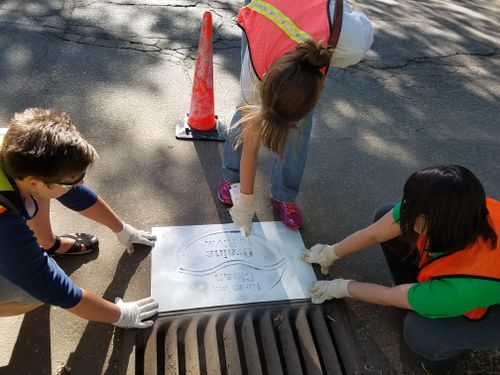
Difference between revisions of "MCM 2 Public Participation/Involvement"
| Line 3: | Line 3: | ||
Protecting stormwater cannot be completed by one person alone, but will be the result of communities engaging their residents, businesses, and industries to become invested in water quality. Minimum Control Measure (MCM) 2 of the [https://stormwater.pca.state.mn.us/index.php?title=MS4_PART_III.STORMWATER_POLLUTION_PREVENTION_PROGRAM_(SWPPP) MS4 General Permit] requires permittees to find methods to motivate their communities into action through opportunities, programs, or other approaches to prevent stormwater pollution. Common examples seen around Minnesota include storm drain stenciling activities, drain adoption programs, and volunteer monitoring programs. | Protecting stormwater cannot be completed by one person alone, but will be the result of communities engaging their residents, businesses, and industries to become invested in water quality. Minimum Control Measure (MCM) 2 of the [https://stormwater.pca.state.mn.us/index.php?title=MS4_PART_III.STORMWATER_POLLUTION_PREVENTION_PROGRAM_(SWPPP) MS4 General Permit] requires permittees to find methods to motivate their communities into action through opportunities, programs, or other approaches to prevent stormwater pollution. Common examples seen around Minnesota include storm drain stenciling activities, drain adoption programs, and volunteer monitoring programs. | ||
| − | == | + | ==MS4 General Permit requirements for MCM 2== |
To keep their community members in the loop, permittees must: | To keep their community members in the loop, permittees must: | ||
:*Provide at least one opportunity for the public to provide input on the stormwater pollution prevention program (SWPPP). | :*Provide at least one opportunity for the public to provide input on the stormwater pollution prevention program (SWPPP). | ||
Revision as of 14:41, 12 January 2018
Contents
Introduction
Protecting stormwater cannot be completed by one person alone, but will be the result of communities engaging their residents, businesses, and industries to become invested in water quality. Minimum Control Measure (MCM) 2 of the MS4 General Permit requires permittees to find methods to motivate their communities into action through opportunities, programs, or other approaches to prevent stormwater pollution. Common examples seen around Minnesota include storm drain stenciling activities, drain adoption programs, and volunteer monitoring programs.
MS4 General Permit requirements for MCM 2
To keep their community members in the loop, permittees must:
- Provide at least one opportunity for the public to provide input on the stormwater pollution prevention program (SWPPP).
- Provide access to the public to view the SWPPP document, Annual Reports, and other documentation related to the SWPPP.
- Consider public input.
- Document activities, as described here.
Resources
Click on the blue links above in the "Requirements" section to get more information and resources specific to those permit requirements. In addition, all resources related to MCM 2 are below.
Fact sheets and guidance documents
- EPA MCM 2 guidance - EPA's guidance and suggested BMPs for an effective public involvement program
- EPA's Soak Up the Rain Campaign - Provides template and customizable outreach tools and resources to educate and engage your community on the impacts of stormwater pollution and how to help solve the problem
Documentation and tracking templates
- Documentation of dates and locations of input activities - City of Faribault's tracking template to document dates and locations of events for the annual public opportunity to provide input
- Documentation of dates and locations of input activities - City of Prior Lake's tracking template to document dates and locations of events for the annual public opportunity to provide input
